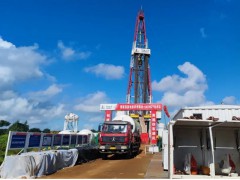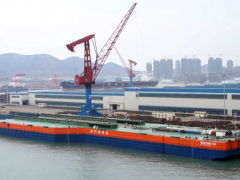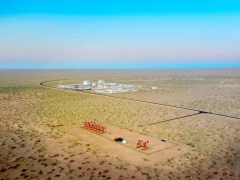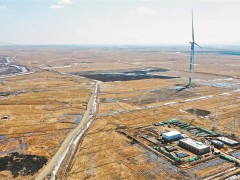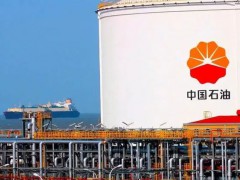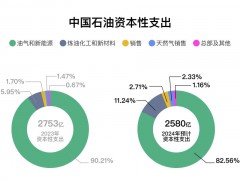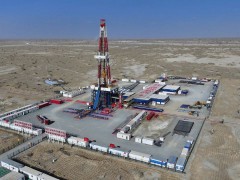据伍德麦肯兹官网4月1日报道,目前,很少有国家要求生产商缴纳碳排放税或参与排放交易计划(ETS)。但随着各国政府寻求实现脱碳目标,这种情况可能很快就会改变。碳排放收费很可能会到来,这将改变上游行业,影响资产价值和行业经济。
全球财政研究高级副总裁格雷厄姆 凯拉斯(Graham Kellas)表示:“各国政府对上游业务征收碳排放税有两种选择。一是征收碳税,二是设定适用于所有二氧化碳排放的固定税率,或实施排放交易计划。根据这两项计划,对特定项目的财务影响可能会通过排放限额得到缓解。
目前在国际、国家和国家以下各级有60多个碳收费制度,但很少有制度以每吨20美元以上的价格影响主要油气产区。
挪威是上游碳排放收费的佼佼者,该国自1991年起就对二氧化碳征税,是欧盟排放交易系统(ETS)的成员之一。英国同样也参与的欧盟(EU)计划是全球规模最大、最活跃的计划。
2007年,加拿大阿尔伯塔省建立了北美首个针对大型油气生产商的碳排放税。不列颠哥伦比亚省于2008年实施了类似的税收,加拿大联邦政府于2019年开始征收。去年,加拿大政府宣布,到2030年,其碳排放税率将提高到每吨135美元左右。美国的绿色议程使美国上游业务的碳排放收费可能性大大增加。
与此同时,考虑到在挪威大陆架运营的勘探与生产企业已经支付了世界上最高的碳税,挪威政府提出的将上游油气业务的总体碳税税率提高近三倍的建议做出了大胆的表态。
挪威新的碳排放计划旨在减少废料和农业等行业的排放,这些部门目前还没有受到碳税的影响。不过,石油和天然气生产商也将受到影响。
WoodMac上游研究团队的Kyrah McKenzie表示:“根据这些提议,到2030年,挪威二氧化碳税和欧盟ETS的价格合起来将达到每吨262美元,几乎是目前价格的三倍。到2030年,碳税将增加到每年近20亿美元,并将增加每桶2美元左右的运营支出,类似于运输关税。在更成熟的油田,这可能会使每桶油增加10美元。”
值得一提的是,挪威的高税率将有助于抵消碳排放税的增长。因此,这对资产和公司价值的影响很小,资产估值将仅下降约1%(14亿美元),但那些更成熟、高碳投资组合的公司价值可能会下降5%。
虽然挪威的一些油田可能会提前停产,但对恢复行业生产的影响有限。WoodMac的研究表明,地下还将剩下不到5000万桶的石油。
分析表明,碳税的财政处理可以说比定价更重要。在世界其他地区,每吨262美元的碳价格将造成更严重的影响。一段时间以来,生产商一直在把碳定价假设——通常在每吨40美元到100美元之间,纳入其财务模型。
分析表明,在每吨40美元的价格下,大多数资产的价值对碳排放收费相对不敏感,尽管这样的收费率也可能抹去一些资产的剩余价值。但是按照每吨200美元的价格——这比挪威计划的2030年的价格要低,三分之一的资产将至少有50%的剩余价值转移到碳排放费用上。
这些数据假设所有的排放都要收取碳排放费,实际风险敞口将更低,这取决于各国政府是否愿意以免费排放信贷的形式提供排放限额。这是政府可以用来调整碳排放收费的最重要措施,从而保护资产价值,减轻对该行业投资的影响。
缓和碳排放收费影响的另一个主要手段是,有能力用政府的其他支出抵消这些影响。虽然减轻碳排放收费的影响是可能的,但在许多司法管辖区实现这一目标将是复杂的。
与那些以税收为中心的国家相比,那些实行包括特许权使用费在内的财政制度的国家将处于不利地位,特许权使用费是对总收入征收的,不允许扣除运营成本。而对于由产量分成合同管理的上游业务,将更加复杂。
王佳晶 摘译自 伍德麦肯兹官网
原文如下:
Carbon pricing plans ‘could transform upstream oil and gas economics’
At present, few countries require producers to either pay a carbon tax or participate in an emissions trading scheme (ETS). But as governments seek to meet decarbonisation targets, that could soon change.
Carbon charges are likely to come, and they will transform the upstream sector, affecting both asset values and the industry’s economics.
Graham Kellas, senior vice president, global fiscal research, said: “Governments have two options for imposing carbon charges on upstream operations. They can either levy a carbon tax, which is a fixed tax rate is applied to all carbon dioxide emissions, or implement an ETS.
"Under both schemes, the financial impact on specific projects can potentially be mitigated by an emissions allowance.”
More than 60 carbon charge regimes currently exist at international, national and subnational levels, but very few affect major oil and gas producing areas at a rate above US$20 per tonne.
Norway is the standout country for upstream carbon charges: as well as having levied a tax on CO2 since 1991, it is a member of the EU’s ETS. The EU scheme, in which the UK also participates, is the world’s largest and most active.
North America’s first carbon tax for large oil and gas producers was established by the Canadian province of Alberta in 2007. British Columbia implemented a similar tax in 2008, with the Canadian federal government introducing a levy in 2019. Last year, the Canadian government announced its carbon tax rate would rise to the equivalent of around US$135 per tonne by 2030. US President Joe Biden’s green agenda is making carbon charges for upstream operations in the US far more likely.
Meanwhile, the Norwegian government’s proposal to almost triple its overall carbon tax rate on upstream oil and gas operations makes a bold statement, considering that E&Ps operating on the Norwegian continental shelf already pay the highest carbon taxes in the world.
Norway’s new carbon plan aims to reduce emissions from sectors such as waste and agriculture, which are not already exposed to carbon taxes. However, oil and gas producers will be affected too.
Kyrah McKenzie, from WoodMac’s upstream research team, said: “The proposals would see the combined Norway CO2 tax and EU ETS price reach US$262 per tonne by 2030 – nearly a three-fold increase compared to today’s price.
“The changes will increase carbon taxes to almost US$2 billion per annum by 2030, and would make up around US$2 per barrel of opex, similar to transportation tariffs. This could increase up to US$10 per barrel of oil equivalent at more mature fields.”
However, McKenzie said that Norway’s high tax rates, against which carbon taxes are deductible, would help offset the rise. Norway’s low carbon intensity also reduces exposure.
She added: “As a result, the implications for asset and company value are minimal. We believe asset valuations would fall by about 1% (US$1.4 billion), though company value could fall by up to 5% for those with more mature, high-carbon portfolios.”
While cessation of production may be brought forward at some Norwegian fields, the impact on recovery is limited. WoodMac’s research indicates less than 50 million barrels of oil equivalent would be left in the ground.
McKenzie added: “Our analysis shows that the fiscal treatment of carbon taxes is arguably more important than pricing. A US$262 per tonne carbon price in other parts of the world would have more serious implications.”
Kellas said producers have been including carbon pricing assumptions — usually between US$40 and US$100 per tonne — in their financial models for some time.
His analysis indicates that at US$40 per tonne, most asset values are relatively insensitive to the carbon charge, although even that rate could wipe out the remaining value of some assets. But at US$200 per tonne – a lower rate than Norway is proposing for 2030 – a third of all assets would have at least 50% of their remaining value transferred in carbon charges.
He said: “These figures assume all emissions are subject to any carbon charge. Actual exposure will be lower, depending on each government’s willingness to offer emissions allowances in the form of free emissions credits.
"This is the most important measure governments can use to modify carbon charges, thereby safeguarding asset values and lessening the impact on investment in the sector.”
The other principal instrument to soften the impact of carbon charges is the ability to offset these against other payments to government.
“While mitigating the impact of carbon charges is possible, it will be complicated to achieve in many jurisdictions,” Kellas said.
“Countries with fiscal regimes including royalty, which is levied on gross revenue and does not allow deduction of operating costs, will be at a disadvantage relative to those with tax-centric systems. And for upstream operations governed by production sharing contracts mitigation will be even more complex.”?
免责声明:本网转载自其它媒体的文章,目的在于弘扬石化精神,传递更多石化信息,并不代表本网赞同其观点和对其真实性负责,在此我们谨向原作者和原媒体致以敬意。如果您认为本站文章侵犯了您的版权,请与我们联系,我们将第一时间删除。

